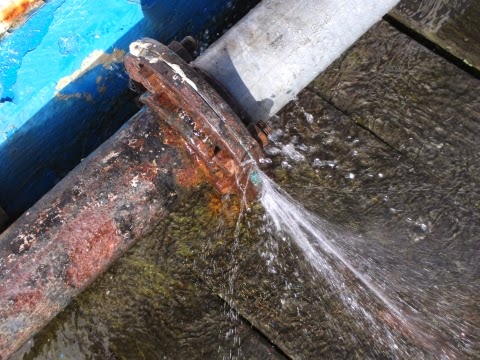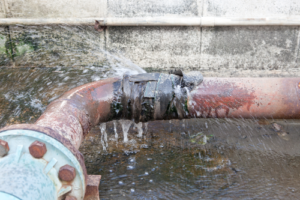Identifying and Quickly Fixing a Burst Pipe: A DIY Approach
Identifying and Quickly Fixing a Burst Pipe: A DIY Approach
Blog Article
Nearly everybody seems to have their own unique thinking when it comes to What to Know Before Installing a Dishwasher.

A ruptured pipe is a major emergency; you can just stand as you watch water you pay very much to reunite with the planet. In worse situations, you notice a pool on your cooking area flooring, which is a fantastic trip threat, particularly if you have children around. If the pipeline that burst was in your wall surfaces, bad news: you might need to paint that entire area.
Just how can a catastrophe like a ruptured pipe be protected against as well as taken care of? Well, by listening to your expert emergency plumbers as well as adhering to these guidelines.
Just how do I know when my pipes have ruptured?
Varying water stress
Pipelines do not just burst in a day. You may have observed that your cooking area tap or shower doesn't run quickly when you turn the faucet. It may stop for a couple of seconds and after that blast you with even more pressure than usual.
In other instances, the water may appear regular at first, then drop in stress after a couple of secs.
Wet walls and water spots
Prior to a pipeline ruptureds, it will leak, many times. If this relentless leaking goes unnoticed, the leak may graduate right into a vast gash in your pipe. One easy method to avoid this emergency is to watch out for damp wall surfaces advertisement water stains. These water stains will lead you right to the leak.
Puddles under pipes and sinks
When a pipe bursts, the outflow develops a puddle. It might appear that the pool is expanding in size, and despite how many times you mop the pool, in a couple of mins, there's an additional one waiting to be cleaned up. Typically, you might not be able to map the pool to any kind of noticeable pipelines. This is a sign to call a specialist plumber.
Untraceable trickling sounds
Pipeline ruptureds can take place in the most undesirable locations, like within concrete, inside wall surfaces, or under sinks. When your house goes quiet, you may be able to hear an annoyingly relentless trickling noise. Even after you've examined your shower head and also kitchen area tap, the dripping might proceed.
Beloved visitor, the leaking may be originating from a pipeline inside your walls. There isn't much you can do about that, other than inform a specialist plumber.
Turn off the Water
When water freezes, it increases in quantity by regarding 9 percent. And it increases with significant pressure: The stress inside pipes may go from 40 extra pounds per square inch to 40,000 psi! No pipeline can hold that much pressure, so it bursts. The break might happen where the ice forms, yet more often, it takes place where water pressure locates a vulnerable point in the pipe. That may be inches or perhaps feet from the frozen location. Discover the water shutoff valve as well as turn off the water to stop more damages. You might additionally require to shut off the electricity also, depending on where the leakages occurs and also exactly how large it is.
Polluted water
Many people think a burst pipeline is a one-way electrical outlet. Rather the contrary. As water flows out of the hole or tear in your plumbing system, contaminants locate their way in.
Your water might be contaminated from the resource, so if you can, inspect if your water container has any kind of problems. Nevertheless, if your alcohol consumption water is provided and purified by the local government, you need to call your plumber promptly if you see or smell anything funny in your water.
What do I do when I detect a ruptured pipeline?
Your water meter will certainly remain to run even while your water wastes. To lessen your losses, locate the main controls and transform the supply off. The water mains are an above-ground framework at the edge of your building.
How to Fix & Detect a Leaking Pipe
How Do I Know if a Pipe is Leaking?
Leak detection tests can help you determine if your pipe has a leak. Even if you don’t see an apparent leak, you should still conduct leak detection tests regularly to save water and money—and prevent major damage to your home.
Water meter. It can be helpful to figure out what your usual water meter usage numbers are and then monitor them regularly. To monitor your meter, first, turn off all water faucets in your home. Check the meter and write down the numbers. In a few hours, check the meter again. If the numbers have changed, you have a leak. Water gauge. Use a water gauge to test your water pressure. Your showerhead should produce a certain amount of water pressure based on its model and design. If the pressure is lower than it is supposed to be for that specific showerhead, your home likely has a leak. Puddles. Look inside your bathroom, laundry, and kitchen sink cabinets. Puddles around the cabinets or around toilets, tubs, showers, and washing machines indicate the presence of a leaking pipe. You may also notice loose tiles, peeling or flaking paint, or mold caused by water accumulation. Napkin test. Even if you don’t see any puddles, you may still have a leak. You can test for water leaks in the bathroom, laundry, and kitchen by wiping below-sink connections with a napkin, paper towel, or piece of toilet paper. If it becomes damp, you probably have a leaking pipe under the sink. Discolored walls. Walls that are discolored—usually with brown or yellow stains—or bulging might mean that they have been impacted by water damage caused by a leaking pipe. Smell. A leaky pipe will create sitting water, and over time, that water may develop a musty smell. If your home smells musty, but you can’t locate the source, it may be due to a leak. Steps for Fixing a Leaking Pipe
A leaky drain can be remedied by tightening the pipe base, replacing the drain seal, caulking the rim, and tightening the pipe nut. Similarly, a leaking toilet pipe can be treated by tightening the packing nut. You may also need to replace the valve. A leaky faucet may just need tightening or replacement of the washers. If that doesn’t work, consider replacing your faucet. If your pipe has a hole in it, you may want to use a pipe leak sealer or pipe leak tape. This quick fix for water pipe leaks can also temporarily fix a copper pipe leak. https://www.ahs.com/home-matters/quick-tips/how-to-tell-if-pipes-are-leaking/

I stumbled upon that write up about What to Know Before Installing a Dishwasher when surfing the web. Loved our blog entry? Please share it. Let others find it. Many thanks for your time invested reading it.
Navigate plumbing issues professionally. Report this page